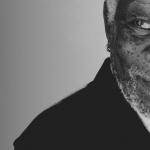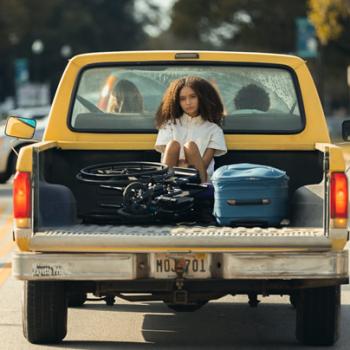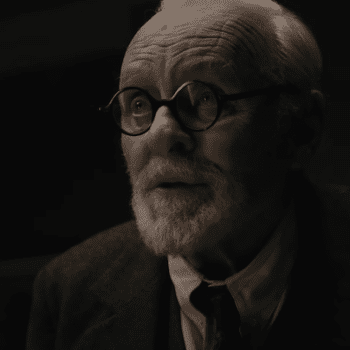“When you wake up in the morning, Pooh,” said Piglet at last, “what’s the first thing you say to yourself?”
“What’s for breakfast?” said Pooh. “What do you say, Piglet?”
“I say, I wonder what’s going to happen exciting today?” said Piglet.
Pooh nodded thoughtfully.
“It’s the same thing,” he said.
— A.A. Milne, Winnie-The-Pooh
Many a bear—the stuffed-with-fluff sort of bear—will have an especially exciting day today, given that it’s Bring Your Teddy Bear to Work Day. And that’s good, because if there’s any day that could use a teddy bear in it, it’s the second Wednesday of October. And so I take my bear to work with me.
This teddy bear—a gift from the kind, marketing-astute folks from the new film Goodbye Christopher Robin—didn’t have much of a commute. Since I blog from home—just about 10 paces away from my bedroom—he might’ve been able to walk by himself.
This bear, pictured above, is said to be a replica of Christopher Robin’s very own teddy bear (originally named Edward). You can visit the real Winnie the Pooh in the New York Public Library, along with several of his friends.
But while this may look like Christopher Robin’s Pooh Bear, it doesn’t resemble my first Pooh.

That’s me with my sister, Amy and my homemade Winnie-the-Pooh stitched together by one of my mom’s best friends. I don’t quite remember when he first came to live with us, but I did my best to make him feel at home. From then on, he was my most reliable childhood companion: He came on every trip and slept with me every night. And like Christopher Robin’s Pooh, mine became the star of many a story—some told by my Dad, some made up by me.
Other stuffed animals came and went, and some developed even more colorful personalities in my imagination. But none ever supplanted Pooh in my animal hierarchy. He was always first among equals, and when I lay awake in bed, terrified that a sinister statue would come and eat me, I trusted that Pooh somehow would protect me. (Maybe Pooh couldn’t physically fend off the statue, which was very seriously scary—but perhaps it could at least distract it long enough for me to run to Mom and Dad’s room.)
Thinking back, though, the statue was the least of Pooh’s difficulties.
That bear survived road trips and sleepovers, pillow fights and Monopoly games. He was punched and squeezed and thrown down the stairs countless times. I loved Pooh well past the point when his mouth wore off and his stuffing started squirting out. When his arms began coming off, my mom stitched him back together—an operation for which I was grateful. But when the fabric itself started disintegrating, leaving his insides to spill out like some sort of G-rated Tarantino character, there wasn’t much we could do short of some drastic transplant.
By then, I was getting a little too old for stuffed bears anyway, but I couldn’t throw him out. I’m sure he’s somewhere still—at my house or my parents, waiting patiently to be picked up again.
There’s a real beauty in old, much-loved stuffed animals. They’re filled with more than fluff and foam chips: They hold hopes and dreams and fears and adventures. They live for us—live in us—in a strange but very real way. Truth be told, I don’t remember what some of my best friends looked like when we were 4 or 5. But I remember everything about Pooh—how his arms flopped, how his shirt felt under my fingers, how it felt to squeeze him tight.
A.A. Milne’s Pooh was, admittedly, a bear of very little brain. He didn’t get much wiser with time, and neither did mine. But I think, in a way, we learned from them. We learned what it meant to care for something. To love and cherish something—not because we could expect them to feed us or to show us a new game, but simply because they were. Our love for them was selfish, yes, but selfless, too. We loved them because they were there to love. We loved them in spite of themselves. Sometimes, in spite of ourselves.
In the Bible, Paul tells us that there comes a time when we put away our childish things. And so we do. But we don’t put them away entirely: A bit of them stays with us—to remind us, perhaps, that even as our outsides grow old, there’s something inside us—a bit of divine fluff—that stays young forever.














